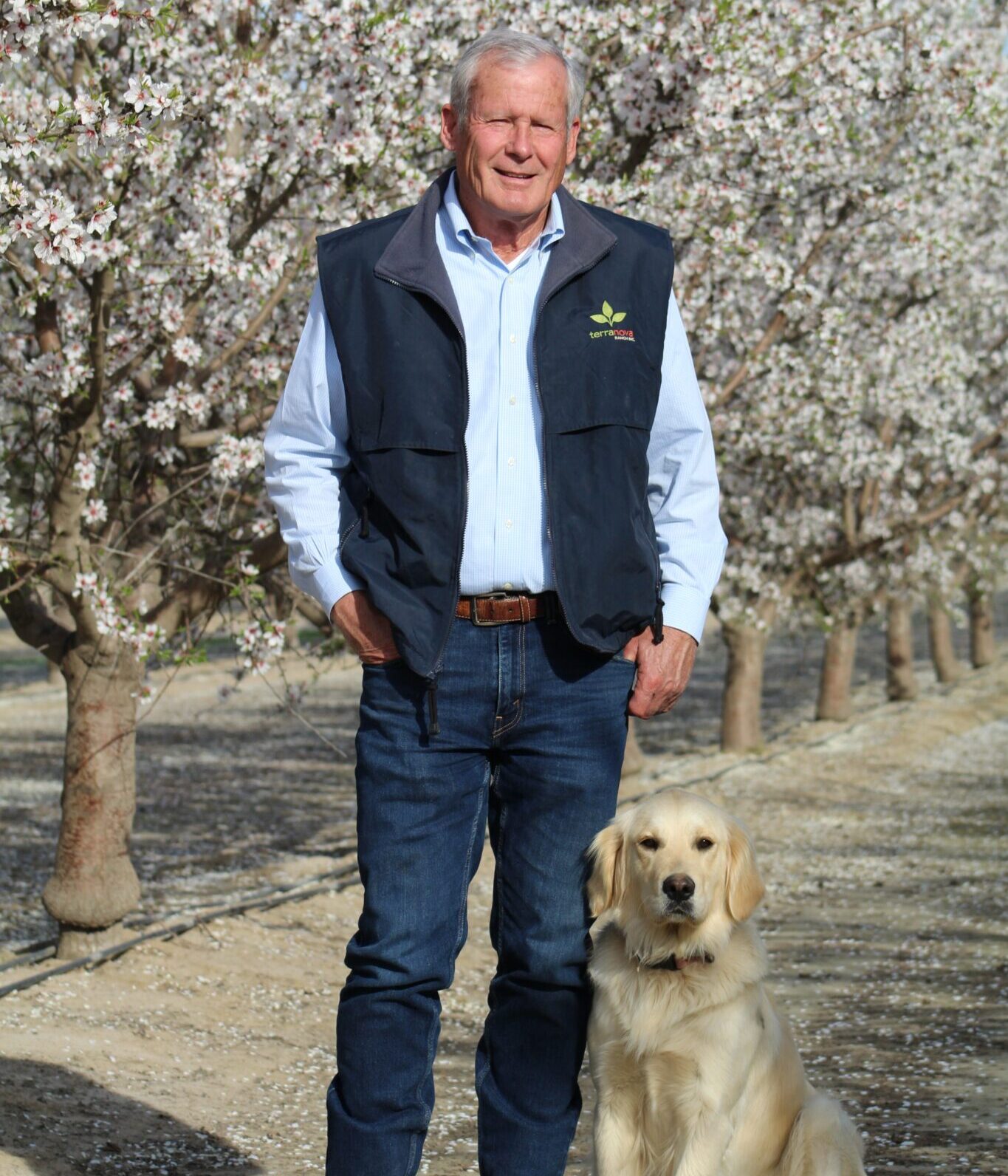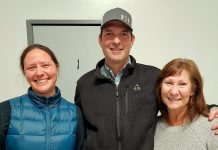
President of the California State Board of Food and Agriculture, 2017 Agriculturist of the Year, Chairman for the California Cotton Alliance, Director and past chairman for the California Tomato Growers Association, director for Western Growers Association, Raisin City Water District, and the list goes on. Don Cameron has held so many distinctive positions within the agriculture community, it’s almost hard to believe he didn’t originally intend to become a farmer.
“I had always wanted to work outdoors and originally wanted to go into wildlife management,” he said over the phone as he traveled from one commitment to another. “The story is pretty simple. I actually worked after college for six months out of Mendota Wildlife Refuge as a seasonal aide. I took the state test to become a full-time employee and got a little card back that said ‘Congratulations, you passed the test. However, you weren’t randomly drawn by our computer for an interview.”
That was the end of Cameron’s wildlife management career. Still in need of a job, he tried something new and applied where a friend worked. He was hired to work with the farm advisors at the Fresno County UC extension office. That was in the 1970’s, and it was the start of a long and expansive career in agriculture.
Meaningful Contributions
This month, Cameron is celebrating 40 years at Terranova Ranch Inc. in the central San Joaquin Valley. When he was hired in April 1981, the farm was much different from the 6,000 acres of diversified crops it is today.
“It was much smaller when it opened in 1979. I had actually been doing work for the previous owner there,” he said. “I was really familiar with the area here. It was a natural fit, but I had a lot to learn. As you know, farming is very complex, but I thought I had a really good background.”
With his degree in Biology from California State University, Fresno and his experience at the extension office, Cameron already had a wide knowledge of soil, water and plant tissue. That knowledge was the initial foundation on which he built innovative conservation practices used at Terranova.
“I think having a fresh look at what we were doing was really important. We became very innovative. We try different things,” Cameron explained. “I wasn’t afraid to try different things that maybe other people would be a little hesitant to try. Maybe it was because of my lack of experience that I was freshly looking at the way things are being done.”
When Cameron came on board in the 1980s, Terranova primarily grew cotton and wine grapes. In the early 2000s, the farm started adding in a wider variety of crops, with a focus on crops that were not widely grown by other farms. Today, there are more than 25 different crops produced at Terranova, including organic, conventional and biotech products.
“We looked for different crops that would be more profitable. Crops that a lot of other people didn’t want to grow or found too difficult to grow, we tried it,” said Cameron, Terranova’s vice president and general manager. “A lot of them were successful and some of them weren’t, but we did try a lot of different crops over the years.”
He said one of the biggest changes came in 2009 when the farm invested in subsurface drip irrigation. He explained the irrigation was more uniform and led to better production for the crops they were growing. The farm also removed some of the wine grape acreage because of the highly variable market and started planting tree crops including almonds, walnuts and pistachios.
“We found that being diverse stabilized our income,” he said. That wasn’t the only benefit Cameron found. He believes the farm’s crop rotation is also helping with disease and pest control.
That rotation includes dozens of crops spread over the 6,000-acre farm. The top crop by acreage is processing tomatoes, but you will also find carrots, onions, peppers and seed crops to name a few. The farm also has about 900 acres in organic production with crops including tomatoes, garlic, peppers, wheat, alfalfa, corn for rotation and several organic crops for seed.
“There’s more risk in organic production, but we feel like we do pretty good with it. We have a good program in place. Some of the things we learn with organic we use in the conventional crops and vice versa,” he said. “Different farming techniques. If it works well in one, we’ll transfer it to the other.”
Water: A Constant Need
With all the changes and transformations the farm has seen, one thing stays constant: the need for water.
“The primary source of water for growers in our areas is groundwater. But prior to GSA formation, prior to the groundwater sustainability law going into effect in 2014, we realized we couldn’t pump the groundwater forever,” Cameron said. “We were seeing declining levels. We’ve seen at least a foot of decline in elevation every year. I figured out that if we didn’t do something about it, we wouldn’t be farming long-term. And so, over the years, we’ve been capturing floodwater and using it instead of pumping the water from underground. If floodwater was available, we’d use that in place of groundwater.”
That started Cameron’s groundwater recharging project. In 2010, officials from the Natural Resources Conservation Service (NRCS) heard about the project and suggested Cameron apply for a Conservation Innovation grant. He applied and received a grant, which he said started the farm down the path of actively using floodwater to grow crops such as almonds, walnuts, wine grapes, pistachios, olives and open ground.
“From that, we documented the inflows and the water levels below these fields and saw that we could actually flood actively growing fields and increase the water table below them,” he said.
They then worked with grant writer Phil Bachand and the Kings River Conservation District to submit a grant to the Department of Water Resources and received a floodwater corridor grant. Cameron said the intent is to take water off of the river during flood periods and divert it to the farm. There is a dual benefit to the plan. While providing needed water to the farm, it also prevents flood damage to areas downstream of the project.
“It took until last year to complete the whole phase one of this grant with the Department of Water Resources. As you can expect, the costs went way up during the lengthy planning and construction of the project. We thought it was important and would benefit not only our farm, but additional acres and farms within our region. So, we built it large enough for other projects to be attached to it and really take advantage of the floodwater that came down and flooded the Kings River,” Cameron explained.
Phase One is complete. Phase Two is receiving funding from a grant through the Raisin City Water District from NRCS. Cameron said the project is ongoing with plans for completion in a couple of years. With the project moving forward, the only thing missing is the water. California continues to be drier than average, and there has not been much opportunity for floodwater capture in recent months. Still, Cameron is a farmer and farming requires optimism.
“We know that it will flood. We know it’ll flood again. We know we’re going to have continual drought throughout California, and with climate change, we’re probably going to see more extremes going down the road,” Cameron said.
With more than 40 years of farming under his belt, Cameron has seen floods and droughts come and go, along with many other aspects of working the land. When asked what wisdom he would give to a farmer who is considering trying something new, he said he would encourage them to take a risk.
“We all take risks in everything we do as farmers,” he said. “You have to weigh the benefit against the risk and balance it. Try it on a small scale, and if it works, you can expand it.”
Cameron has had the opportunity to try many new things during his career and has seen at least one of his experiments become something that has the potential to benefit farmers around the state well into the future.
“What’s really been interesting is, working with UC Davis, working with Stanford, working with Department of Water Resources and Department of Pesticide Regulation, our project has been the example of what can be done in stormwater and floodwater capture throughout the state,” he said.
And it all started with trying something new.
Sabrina Halvorson is the host of the MyAgLife Daily News Report. Hear the full interview with Don Cameron in the April 1st MyAgLife Daily News Report at myaglife.com or on the MyAgLife app.















